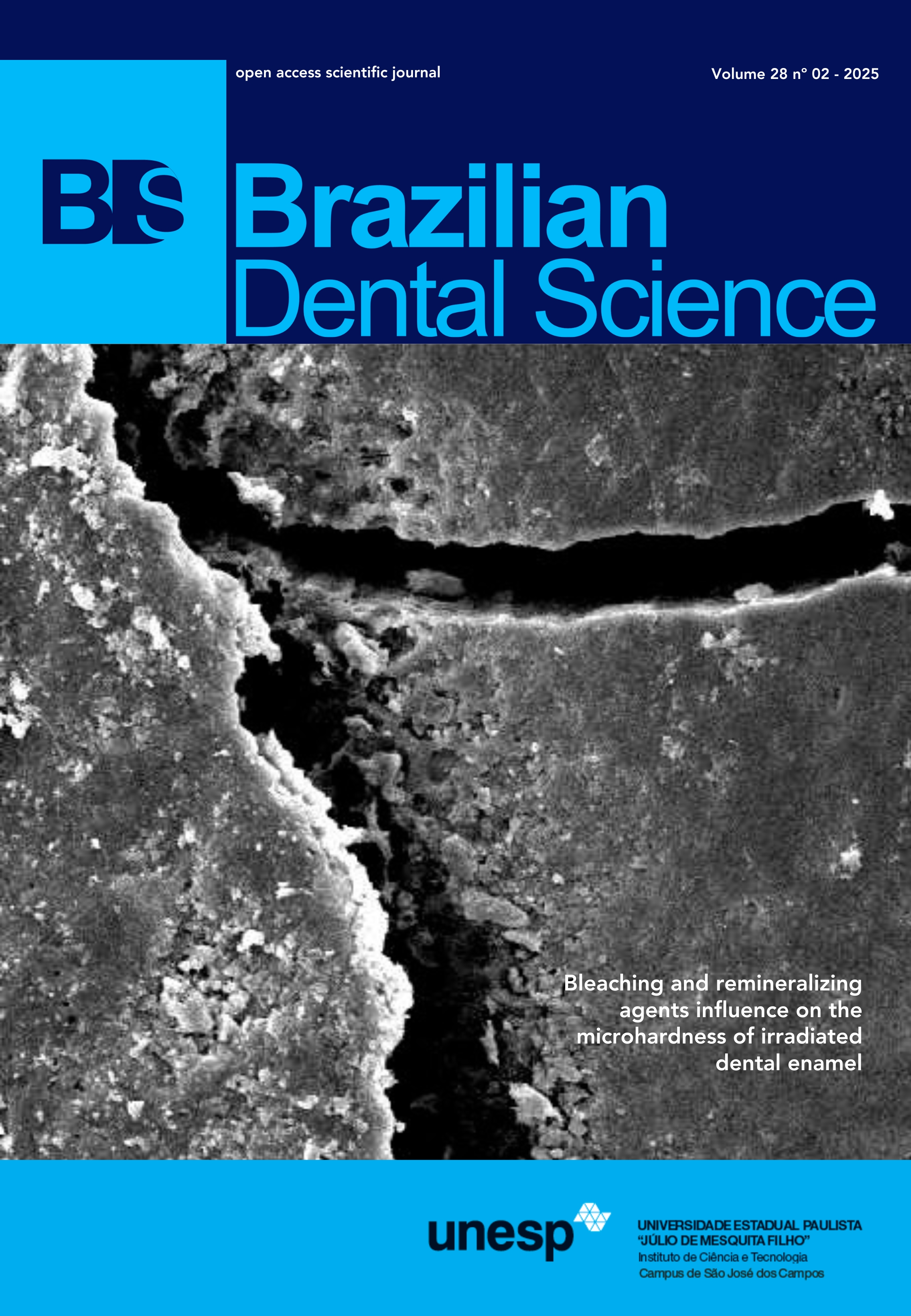Effect of printing angle and aging of a 3D-printed resin for provisional prostheses: an in vitro study on fracture resistance
DOI:
https://doi.org/10.4322/bds.2025.e4758Abstract
Objective: The objective of this study is to evaluate the effect of printing angulation and aging on the fracture resistance of 3D-printed resin for provisional prostheses: an in vitro study. Material and Methods: Specimens of 3D-printed resin with dimensions of 25×2×2 mm were processed according to the manufacturer’s recommendations. Each experimental group consisted of n=5, categorized as follows: 0°, 45°, 90°, 0°A, 45°A, 90°A. Surface characterization was performed using scanning electron microscopy (SEM) (n=1). The specimens in groups 0°A, 45°A, and 90°A underwent aging in an incubator for 60 days at a temperature of 37 °C ± 0.5 °C in distilled water. All experimental groups were tested for three-point bending resistance using a universal testing machine, equipped with a 100 kgf load cell, set to a constant speed of 5 mm/min. Flexural strength values were recorded in megapascals (MPa). The mechanical strength data of the experimental groups were analyzed using a two-factor ANOVA test (p < 0.05) to assess the effects of printing angulation and aging. The findings from surface microscopy and fractography were qualitatively presented. Results: Distinct surface characteristics were identified in each experimental group, with the printed layers being more evident in the 45° and 90° angulations. A reduction in mean flexural strength values was observed for the 0° and 45° angulations after aging; however, no statistically significant differences were identified for the studied factors. The fractured specimens exhibited multiple fragments. Conclusion: Printing angulation and aging did not affect the mechanical performance of the 3D-printed resin for provisional prostheses.
KEYWORDS
Dental prosthesis; Digital technology; Flexural strength; Printing Angle; Three-dimensional printing.
Downloads
Downloads
Published
How to Cite
Issue
Section
License
Copyright (c) 2025 Gabriela Marcele Lins da Silva, Sandro Matheus Albuquerque da Silva, Maria Terêza Lopes de Moura Borba, Adrielly Oliveira Soares de Araujo, Antonio José Tôrres Neto, Larissa Araújo Lopes Barreto, Osman Jucá Rêgo de Lima Netto, Viviane Maria Gonçalves de Figueiredo

This work is licensed under a Creative Commons Attribution 4.0 International License.
Brazilian Dental Science uses the Creative Commons (CC-BY 4.0) license, thus preserving the integrity of articles in an open access environment. The journal allows the author to retain publishing rights without restrictions.
=================




























